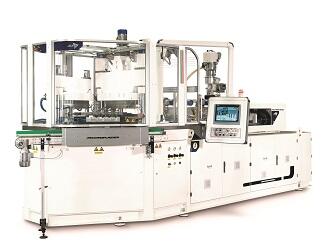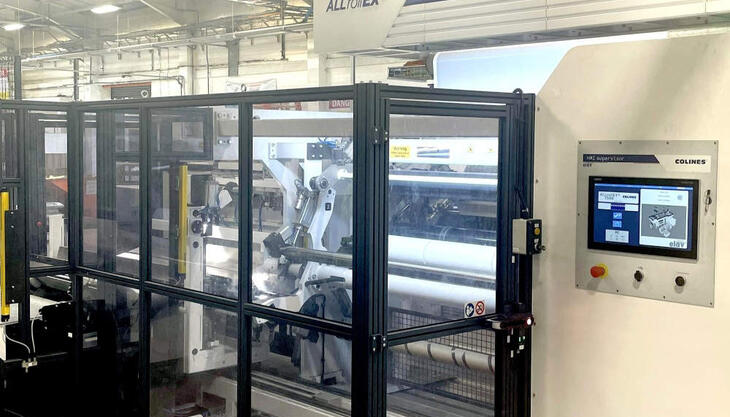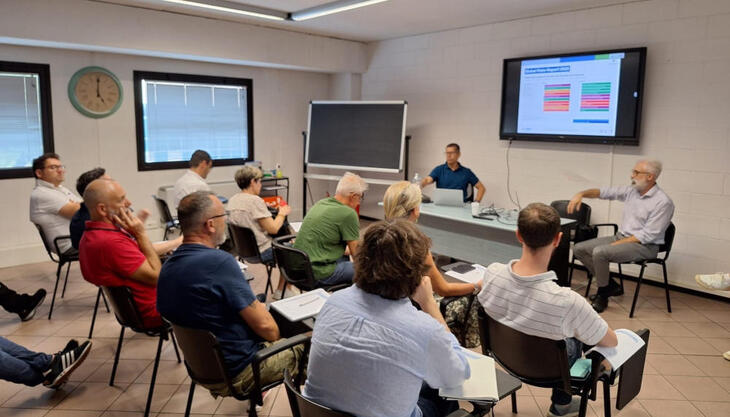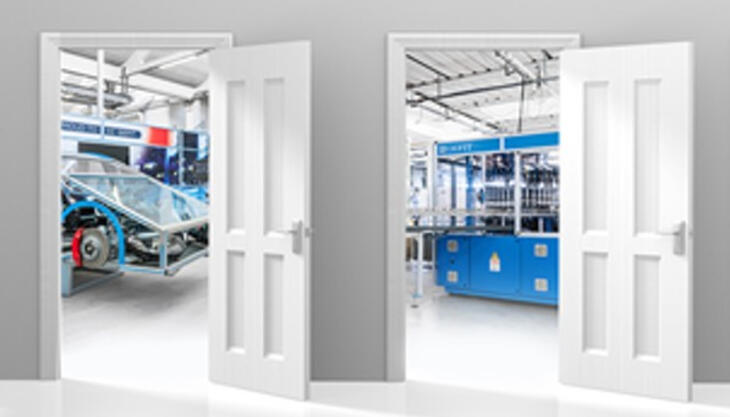Injection blow moulding for perfect necks

The latest development from Meccanoplastica is JET 85, a fully electric injection blow moulding machine designed for the production of small containers with closures that must be manufactured to very tight tolerances, and thus demand extremely precise neck finishing. JET 85 is a three-station injection blow moulding machine with a trigger bar length of 665 mm, a rotation radius of 620 mm, and a total clamping force of 850 kN (i.e. 750 kN on the injection mould and 100 on the blowing mould). The machine is ideal for the pharmaceutical and cosmetics industries, where quality and tolerances are two key considerations.
The critical mould opening/closing phases are based on a combination of electric drives, leverages and toggle joints that give these movements structure and reliability. This Tuscany-based company is among the few manufacturers worldwide that produce this reliable solution, in which all the movements are completely electric.
At the forthcoming NPE fair (Orlando, 7-11 May), the machine will be presented with a set of five-cavity moulds for producing, at a rate of about 1110 pieces per hour, 225 ml LDPE bottles weighing 23 g and featuring a rectangular base.
Opening/closing and clamping
Mould closing/opening and clamping force are obtained by means of a four-point toggle system controlled by an electric servo motor with adjustable speed absolute encoder feedback and satellite roller screw with high loading capacity. The clamping force of the injection mould reaches 750 kN and is automatically adjusted during the calibration of the mould itself according to the pressure needed for the type of bottle to be produced, while the clamping force of the blow mould reaches 100 kN.
Rotary head
The 120° rotation of the head is obtained by means of an asynchronous electric motor driven by an inverter and a mechanical globoidal cam system, making it possible to reach the three positions required by the process (injection, blow moulding, unloading).
The system for unloading the bottles from the male moulds is controlled by an electric brushless motor with absolute encoder feedback and a rack and pinion transmission. A pneumatic cylinder allows the rotation of the bottles and their positioning on an output conveyor belt (optional). The speed and position of the translation travel can be set from the control panel.
Plasticizing and injection
The three-zone plasticizing screw with diameter = 60 mm and L/D = 24 is connected to an electric brushless servomotor with incremental encoder feedback by means of a belt-pulley transmission. The barrel has four heating zones: three thermoventilated ones for the screw and one for the primary nozzle. The injection movement of the material is obtained by means of a synchronized electric servomotor with absolute encoder feedback, with the encoder acting on a recirculating ball screw with high load capacity. The material can be injected at five speeds and with five screw positions that can be set by the operator. A probe is mounted on the primary nozzle to detect injection pressure and manage the transition to the maintenance phase.
Automatic lubrication and process control
The machine has a centralized automatic greasing system for lubricating the mechanical sliding parts. It consists of a 24 V electric pump managed by the machine PLC.
The entire production process, the diagnostics, the alarms and the 12-zone thermoregulation (three for the plasticizing cylinder, one for the primary nozzle, eight for the injection mould manifold) can be controlled through the machine’s 15-inch Siemens Simatic HMI TP1500 Comfort touch panel. The UPS, which protects the PLC against breaks in the power supply, and a modem for online support, are both installed inside the electric panel, which is equipped with air conditioning for the drives.

















